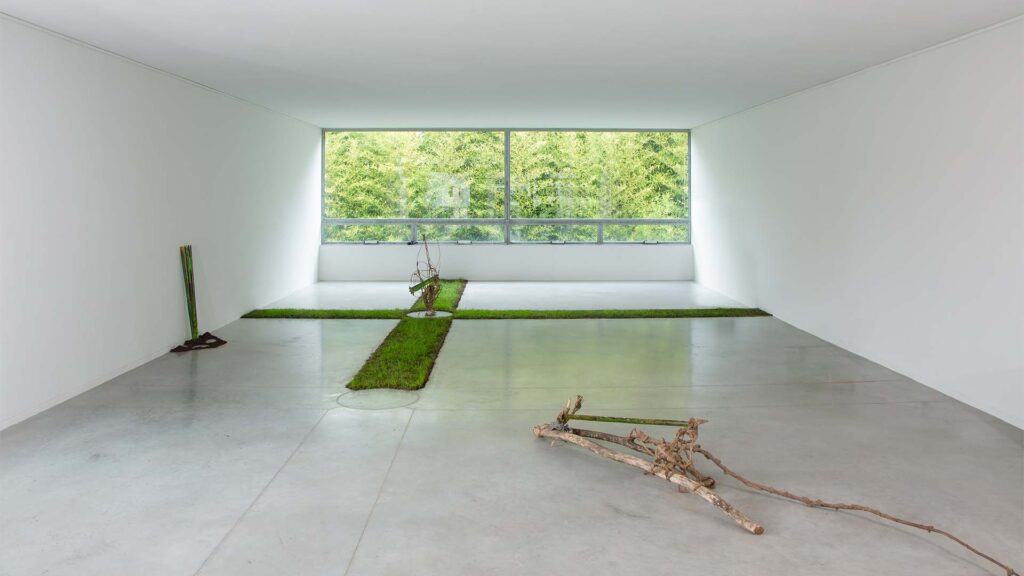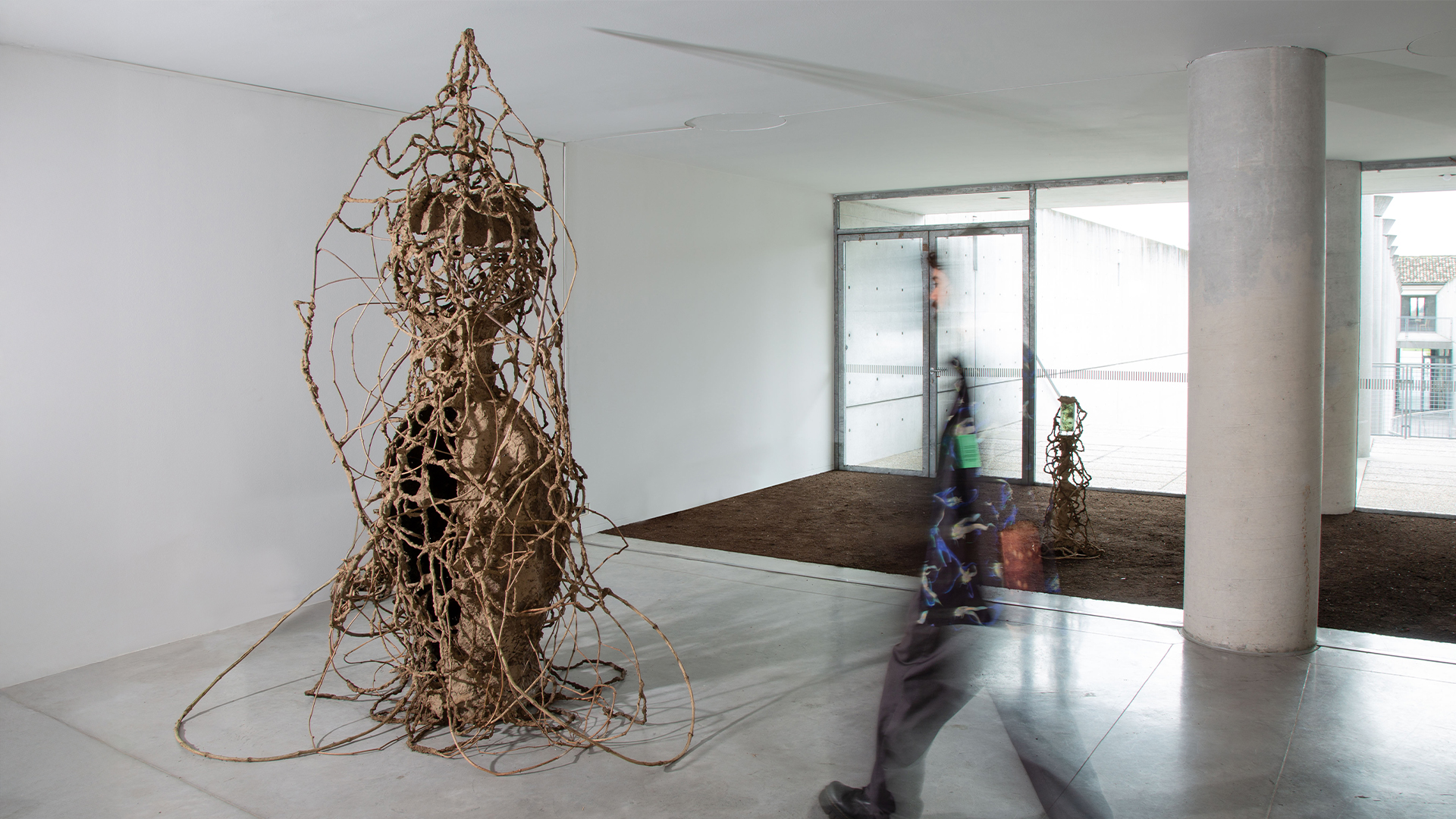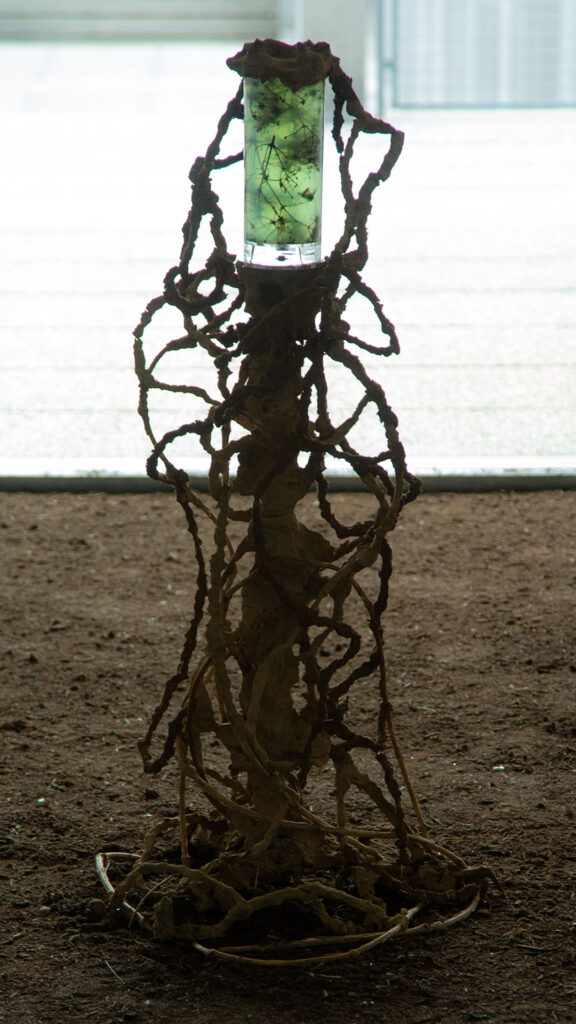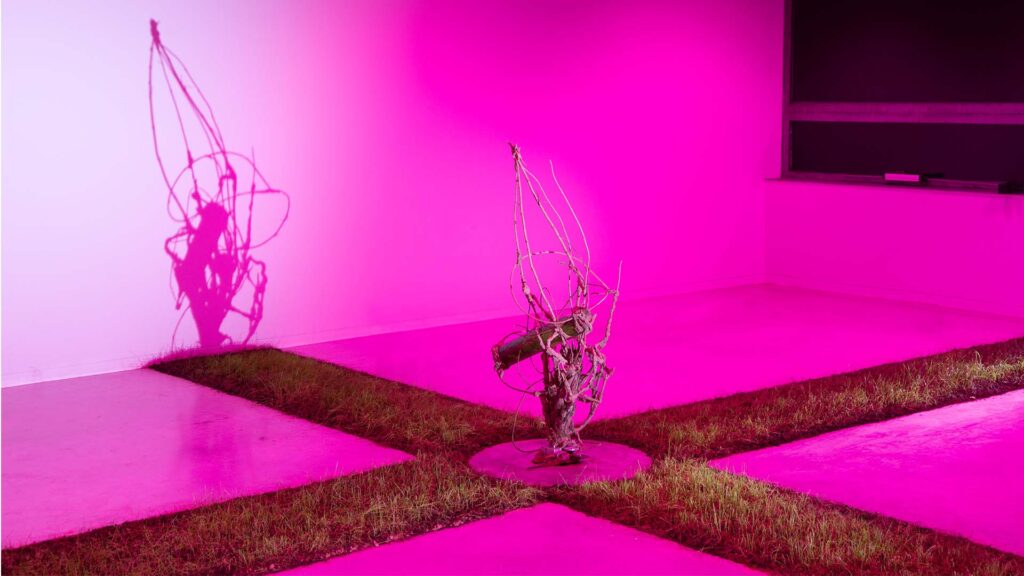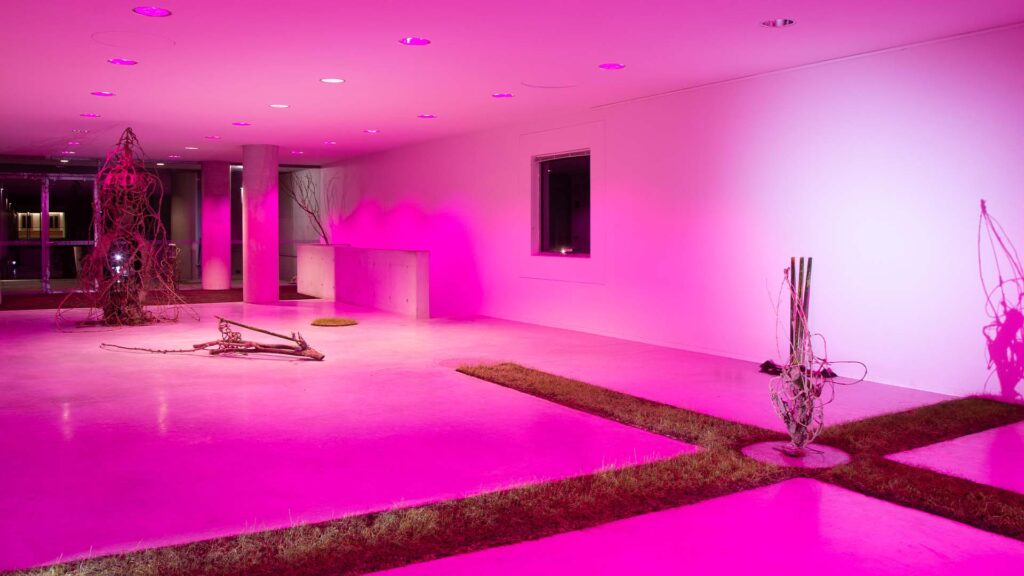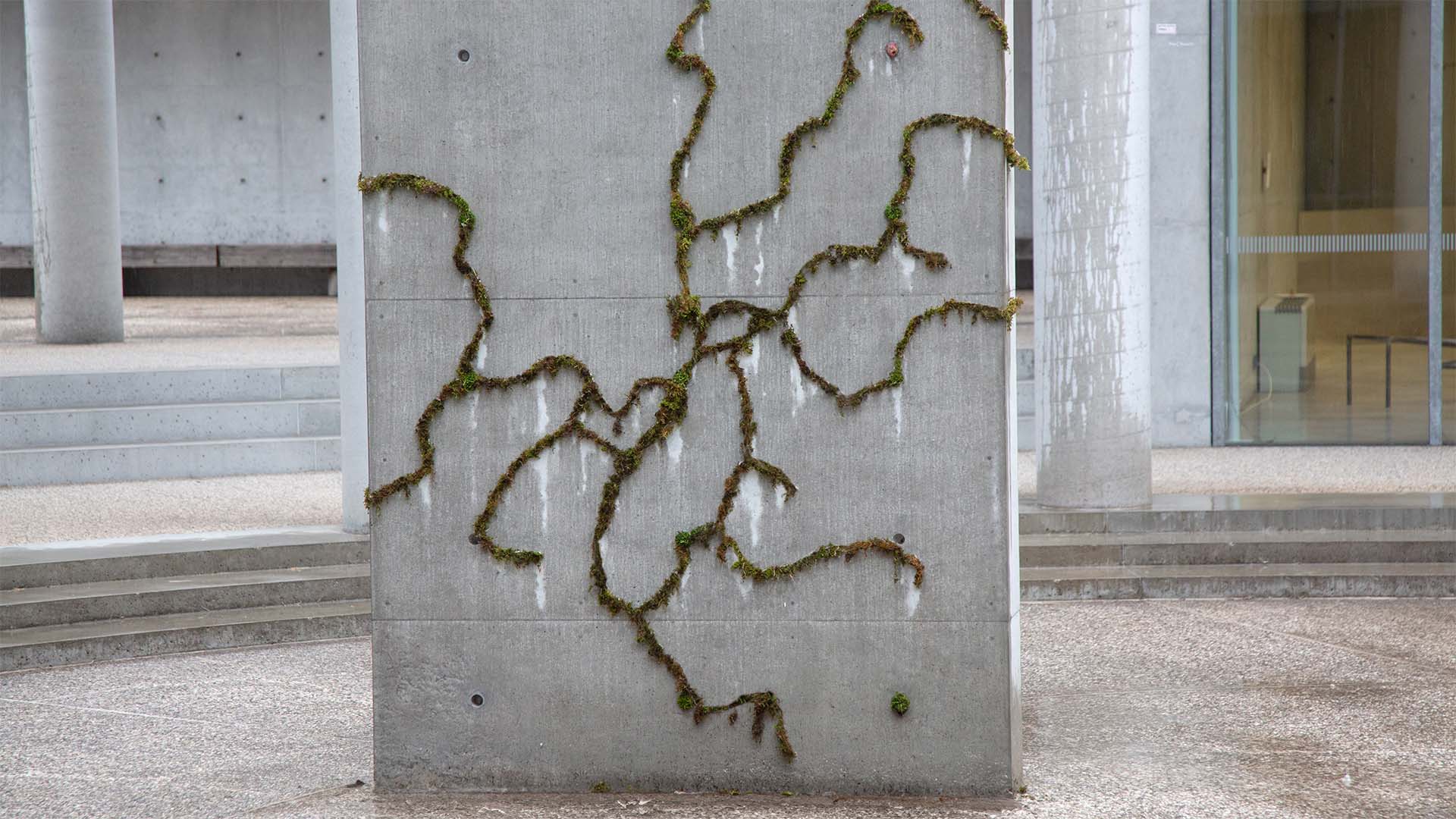We flee toward the thing we try to escape
Grass, soil, moss, clay, branches, percilglass, water, aquatic plants
2024
We flee toward the thing we try to escape 2024
The installation We flee toward the thing we try to escape consisted in the creation of a body that infiltrated an architectural space marked by the strong presence of rigid concrete structures, forming a microcosm that merged with the architecture and blurred the boundaries between inside and outside, transforming the environment into a single organism — unstable and sensitive. Grass, planted directly on the floor, grew and generated a microenvironment: insects and host plants present in the soil taken from the surroundings began to inhabit this space. At the same time, the installation infiltrated the very drawings inscribed in the architectural constitution — circles and bands cutting through the concrete of the building conceived by architect Tadao Ando (Japan) — integrating elements once discarded and bringing them from outside to inside, in a continuous dialogue between the natural and the constructed.
Thus, the space ceased to function merely as a support and became a collective body: unstable, flawed, and permeable. Body and space blur into one another, becoming sensitive surfaces in constant exchange.
The sculptures composed of dry branches, roots, and translucent tubes filled with green liquids function as extensions of this expanded body: fragile, porous structures oscillating between residue and organism, prosthesis and carcass. In them, natural matter is traversed by industrial elements, establishing an ambiguity that rejects any notion of purity in nature. By infiltrating the space with this organic instability, the work reveals a play of tensions: on one side, the geometric, silent, and controlled rigidity of concrete; on the other, the unpredictability of life, which grows and occupies.
The title of the work — We Flee Toward the Thing We Try to Escape — suggests this paradox: the attempt to control or exclude life from architectural space results precisely in its insistent presence, a pulse that returns and pierces through the cracks. In this sense, the work is a material essay on the porosity of structures and the inevitable fusion between bodies, environments, and times.
